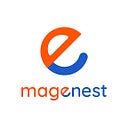WHAT IS UPSELLING? DEFINITION, TIPS, STRATEGIES AND EXAMPLES
We have experience with upselling techniques on a daily basis. But, what is the upselling meaning?
We’ve all heard stories of impulse purchases. Most of us are not focused when shopping in the supermarket without a specific spending plan. And, of course, we will spend more than we think. The point is, once a decision has been made, the buying process has already begun.
So, there’s no point in making an extra attempt to sell the other products. Most of the time, you may have to bite the bullet and pay for that item without taking it home. But, how can you make sure you get what you want, whilst making a profit for yourself?
That’s where upselling comes in. You will always need to present a financial benefit for making the purchase of a second product or service. If the customer is offered to buy an additional product or service for free, it’s upselling.
Now, let’s define the upselling definition!
1. What is Upselling?
Upselling is a technique to encourage customers to buy more expensive similar products. For example, customers want to buy a certain notebook, but the system recommends that they buy several notebooks with more advanced configurations. Of course, the price is higher. It is more convincing if you can specify the reason for the recommendation. This form is also called upward sales, which means selling more expensive items to customers.
Upselling encourages customers to have more accessories or services. If you go to Gome to buy a refrigerator, the default is a one-year warranty, so you can encourage customers to buy a longer warranty period, etc.
2. Types of upselling
There are many types of upselling techniques. However, the table below will sum up for you the top 9 most popular upselling types.
Let’s see what they are!
Read more: https://magenest.com/en/upselling/
